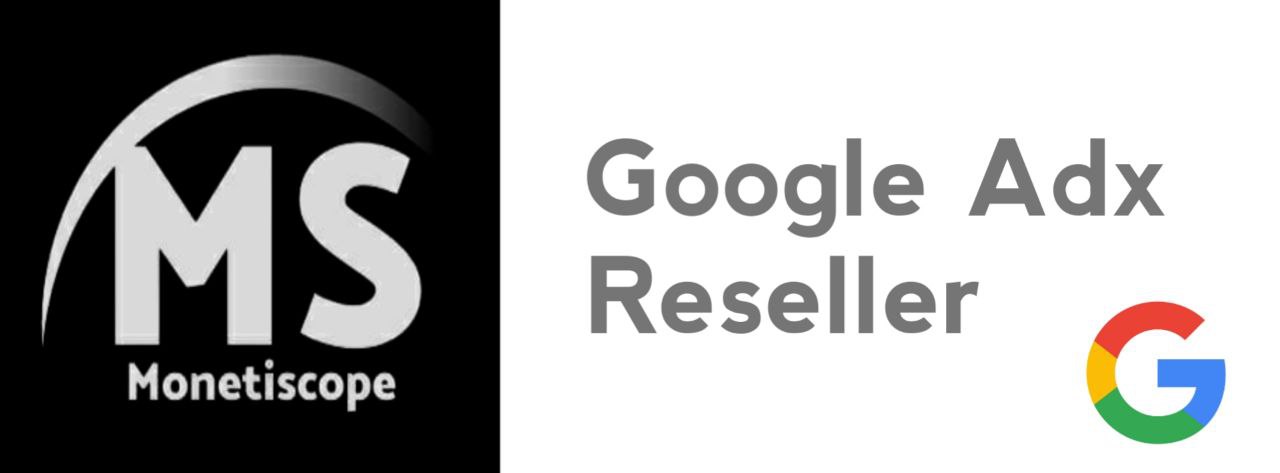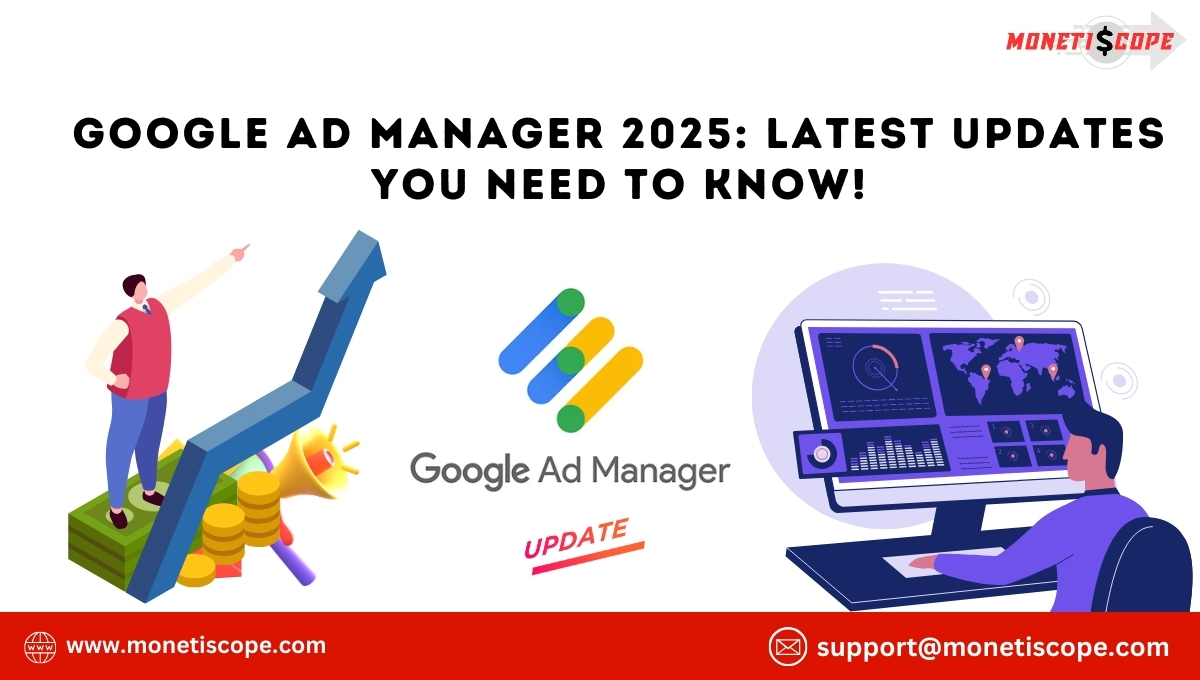Google Ad Manager (GAM) continues to evolve, bringing new features, policy changes, and monetization opportunities. In 2025, Google has introduced several updates that impact publishers. Staying informed about these changes is crucial for optimizing ad revenue and maintaining compliance.
In this article, we will explore the latest updates in Google Ad Manager and how they affect publishers. We will also discuss strategies to maximize revenue and ensure seamless ad delivery.
Key Google Ad Manager Updates for Publishers in 2025
1. Enhanced AI-Powered Yield Optimization
Google has significantly improved its AI-powered yield optimization in 2025. The system now analyzes real-time data and user behavior more effectively, allowing publishers to maximize their earnings.
Key Enhancements:
- AI-driven price floors dynamically adjust based on demand.
- Smarter ad placements ensure better viewability and engagement.
- Automated bid strategy adjustments increase competition among advertisers.
Why This Matters:
With these advancements, publishers can expect higher CPMs and better overall ad performance. AI-driven optimization reduces the need for manual adjustments, saving time and improving efficiency.
2. Improved Header Bidding Integration
Google has enhanced its support for header bidding, making it easier for publishers to integrate multiple demand partners. This change helps increase competition for ad inventory, leading to higher revenue.
New Features:
- More transparent reporting on bid responses and auction dynamics.
- Faster load times with optimized auction processes.
- Better compatibility with server-side header bidding solutions.
How Publishers Benefit:
With improved header bidding, publishers can maximize demand for their ad space. More competition means higher bids, leading to increased revenue potential.
3. Stricter Ad Policy Enforcement
Google is cracking down on policy violations to ensure a better ad experience for users. Publishers need to be aware of stricter enforcement regarding ad placements, content policies, and invalid traffic.
Key Policy Updates:
- Stricter rules on deceptive ad placements.
- More frequent invalid traffic audits.
- AI-driven monitoring to detect policy violations faster.
How to Stay Compliant:
To avoid penalties, publishers should review their ad placements and traffic sources regularly. Staying compliant ensures continued access to premium demand sources and prevents revenue loss.
4. Enhanced Video Ad Monetization Features
Video ads continue to dominate digital advertising, and Google has introduced new tools for publishers to maximize video ad revenue.
New Video Ad Features:
- Better support for out-stream and in-stream video ads.
- AI-powered content scanning for better ad relevance.
- Advanced reporting to track video ad performance in real-time.
Why This Is Important:
With these improvements, publishers can run video ads more effectively. Enhanced tracking and targeting options lead to better engagement and higher revenue potential.
5. Mobile-First Monetization Enhancements
Google recognizes the growing mobile audience and has introduced updates that improve ad delivery on mobile devices.
Key Mobile Monetization Updates:
- Faster-loading ads to improve user experience.
- Improved compatibility with AMP (Accelerated Mobile Pages).
- AI-driven ad placement optimizations for mobile traffic.
Impact on Publishers:
With these enhancements, publishers can deliver high-performing mobile ads without affecting page speed or user experience.
6. Privacy-First Ad Targeting and Consent Management
As privacy regulations become stricter, Google has introduced new privacy-focused ad targeting solutions.
New Privacy Features:
- Expanded support for Google’s Privacy Sandbox.
- Enhanced tools for managing user consent and data compliance.
- More control over personalized ad targeting.
Why This Matters:
Publishers must ensure compliance with privacy laws while maintaining ad revenue. These updates provide better tools for balancing user privacy and monetization.
7. Better Reporting and Analytics Tools
Google has upgraded its reporting and analytics capabilities in 2025, making it easier for publishers to track performance.
New Reporting Features:
- AI-powered insights to predict revenue trends.
- Custom dashboards with real-time data visualization.
- More granular reporting for different ad formats.
How Publishers Benefit:
With improved analytics, publishers can make data-driven decisions to optimize their ad strategy and increase revenue.
8. Advanced Fraud Detection and Traffic Quality Improvements
Google has intensified its efforts to combat ad fraud and improve traffic quality.
Fraud Prevention Updates:
- AI-driven fraud detection for better accuracy.
- Stronger penalties for publishers with high invalid traffic.
- New transparency tools to help publishers identify fraudulent activity.
Why This Is Important:
Ad fraud can lead to revenue loss and account suspensions. With improved fraud detection, publishers can maintain a clean ad inventory and build trust with advertisers.
9. Integration With Third-Party Ad Tech Solutions
Google Ad Manager now offers better integration with third-party ad tech solutions, allowing publishers to enhance their monetization strategies.
Key Integrations:
- Support for more SSPs and DSPs.
- Seamless integration with ad mediation platforms.
- Better API access for custom ad solutions.
How Publishers Benefit:
These integrations provide more flexibility, allowing publishers to expand their monetization strategies beyond Google’s ecosystem.
10. Improved Support for Connected TV (CTV) Monetization
As CTV continues to grow, Google has enhanced its tools for publishers monetizing CTV content.
New CTV Features:
- Improved ad serving for CTV apps.
- Enhanced targeting for streaming audiences.
- AI-powered ad frequency controls to reduce ad fatigue.
Why This Is Significant:
With better CTV monetization tools, publishers can tap into the growing streaming ad market and maximize revenue.
By staying informed about these updates, publishers can optimize their ad revenue and ensure compliance with Google’s policies. Implement these strategies to make the most of Google Ad Manager in 2025!
FAQs: Google Ad Manager Updates in 2025
What are the biggest Google Ad Manager updates in 2025?
Google has improved AI-powered yield optimization, enhanced header bidding, and introduced stricter ad policy enforcement.
How do AI-driven price floors impact ad revenue?
AI-driven price floors adjust in real time, increasing competition among advertisers and maximizing CPMs for publishers.
What steps should publishers take to stay compliant with Google’s policies?
Regularly review ad placements, monitor traffic sources, and follow Google’s policy guidelines to avoid violations.
How do the new video ad monetization features benefit publishers?
They offer better ad relevance, improved tracking, and enhanced reporting, leading to higher video ad engagement and revenue.
What changes have been made to mobile ad monetization?
Google has introduced faster-loading ads, improved AMP compatibility, and AI-driven mobile ad placement optimizations.
How can publishers improve privacy compliance with the new updates?
Use Google’s Privacy Sandbox, manage user consent effectively, and stay updated on data compliance regulations.
What new reporting tools are available for publishers?
Google now offers AI-powered insights, custom dashboards, and granular ad performance tracking.
How can publishers resolve common Google Ad Manager errors and issues?
Regularly check for policy violations, optimize ad placements, and use Google’s support resources for troubleshooting.


